In this guide, we’ll explore a comprehensive List Of Cat Safe Flowers, The Importance Of Selecting Cat Safe Flowers, Cat-Friendly Greenery, Tips For Cat-Safe Flower Arrangements, Common Toxic Flowers. Also, this article offers a good array of options that allow you to add a touch of nature to your home without changing your cat’s well-being.
Creating a pet-friendly space goes beyond providing cozy beds and tasty treats. It also involves being mindful of the flora that graces our homes. For cat owners, finding flowers that are not only attractive but also safe for their feline friends is a priority.
The Importance Of Selecting Cat Safe Flowers
In our pursuit of creating a welcoming and vibrant living space, it’s crucial to consider the well-being of our feline companions. This brings us to the importance of selecting cat-safe flowers. Ensuring a healthy relationship between your love for gardening and your cat’s safety is not just responsible pet ownership. It also contributes to a healthier environment for everyone involved.
Understanding Toxicity
Many flowers, while beautiful, can pose serious health risks to our feline friends. Toxic compounds found in certain blooms can lead to adverse reactions ranging from mild irritation to severe poisoning. It’s imperative to be aware of these potential dangers and make informed choices when selecting flowers for your home.
Common Toxic Flowers
To safeguard your cat’s health, it’s essential to be familiar with flowers that are known to be toxic. Some common culprits include lilies, tulips, and azaleas. These flowers contain substances that, when ingested or even touched, can trigger harmful reactions in cats. By opting for cat-safe flowers, you eliminate these risks and provide a secure environment for your furry friend.
See Also: Are Lilies Toxic To Cats: Find Out If Lilies Affects Your Cat
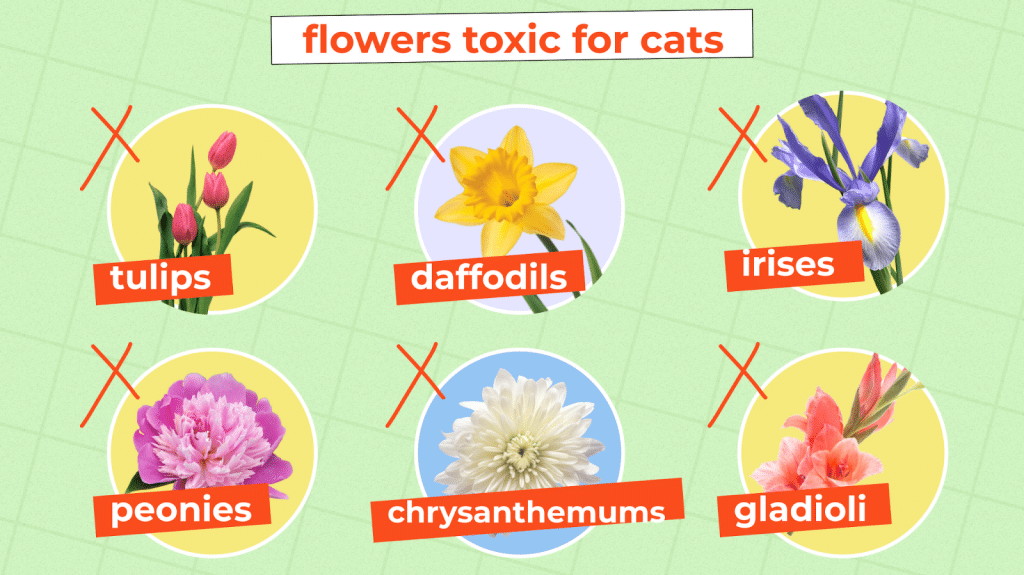
Benefits Of Cat Safe Flowers
Beyond avoiding potential health hazards, incorporating cat-safe flowers into your living space offers numerous benefits. These blooms not only enhance the aesthetic appeal of your home but also promote a soothing atmosphere. Cat-safe flowers such as marigolds, sunflowers, and snapdragons not only brighten up your space but also ensure your cat’s safety.
Choosing The Right Flowers
When selecting cat-safe flowers, consider factors such as pet-friendly varieties and non-toxic alternatives. Incorporate options like spider plants, roses, and pansies into your garden or indoor arrangements. These choices not only add color to your surroundings but also provide a safe haven for your curious feline companion.
Marigolds
These vibrant blossoms not only captivate with their lively colors but also stand out as a safe and non-toxic choice for homes with feline companions.
Characteristics and Vibrant Colors
Marigolds, known for their distinctive petals and warm hues, bring a burst of sunshine to any space. Their shades range from deep orange and bright yellow to warm reds, creating a visually stunning display that can effortlessly elevate the aesthetics of your home. These resilient flowers thrive in various climates, making them a versatile and low-maintenance choice for both indoor and outdoor settings.
Non-toxicity To Cats
One of the primary reasons marigolds shine as cat-safe flowers is their non-toxic nature. These blooms contain no harmful substances that could pose a threat to your feline friends. Unlike some other flowers that might induce adverse reactions, marigolds offer a safe and enjoyable addition to your living space, allowing you to enjoy their beauty without compromising your cat’s well-being.
Tips For Incorporating Marigolds Into Your Home
- Garden Delight: Plant marigolds in your garden to create a cat-friendly outdoor haven. Their vibrant colors will attract attention without posing any risk to your curious cats.
- Indoor Elegance: Bring the beauty of marigolds indoors by placing potted plants in well-lit areas. Ensure that they are out of your cat’s reach to prevent accidental nibbling.
- Floral Arrangements: Incorporate marigolds into your floral arrangements. Their robust petals make them an excellent addition to bouquets, centerpieces, or even flower crowns, adding a touch of elegance to your home.
- Companion Planting: Leverage the natural pest-repelling properties of marigolds by planting them alongside other crops in your garden. This not only enhances the overall health of your garden but also creates a cat-safe space for your furry friends to explore.
See Also: Are Snake Plants Toxic To Cats: See How Snake Plants Can Affect Cats
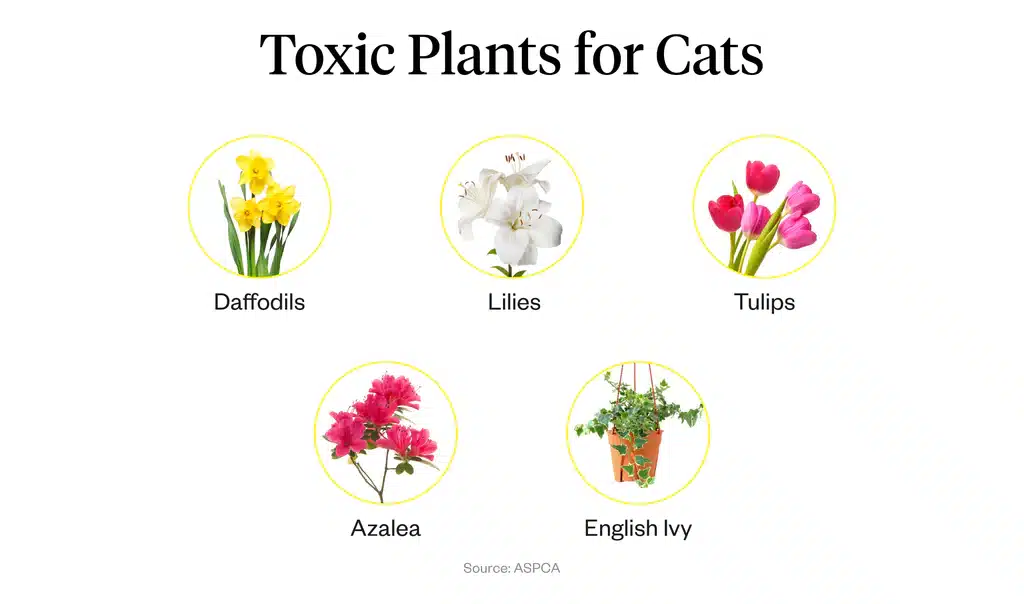
Roses
When it comes to adding a touch of elegance to your home, few flowers rival the timeless beauty of roses. In this exploration of cat-safe flowers, we’ll uncover the diverse world of roses, highlighting not only their stunning varieties but also cat-friendly options within this classic floral family.
Diverse Rose Varieties
Roses boast an extensive array of varieties, each with its unique charm. From classic hybrid tea roses to the carefree floribundas and the captivating grandifloras, there’s a rose for every taste and garden style. Their diversity in colors, fragrances, and petal shapes makes them a versatile choice for cat-friendly homes looking to infuse a touch of sophistication into their surroundings.
Cat-Friendly Options Within The Rose Family
While not all roses are created equal when it comes to feline safety, there are cat-friendly options within the rose family. Opting for rose varieties that are less prone to causing harm to cats is essential. Some safer choices include the Old Garden Roses, such as Alba roses and Bourbon roses, which tend to have fewer toxins compared to their more modern counterparts. By selecting these cat-safe rose varieties, you can enjoy the beauty of roses without compromising your cat’s well-being.
Considerations For Cat Owners
Cat owners should exercise caution when introducing roses into their homes or gardens. While cat-friendly rose varieties are generally safer, it’s crucial to consider factors such as placement and accessibility. Keep roses out of your cat’s reach to prevent accidental ingestion, as even non-toxic plants can cause digestive upset if consumed in large quantities. Prune your roses carefully to eliminate thorns and reduce the risk of injury to your feline friend.
Additionally, be mindful of any pesticides or fertilizers used in your rose garden, as these can be harmful to cats. Opt for pet-safe alternatives to ensure a cat-friendly environment without compromising the health of your cherished companion.
See Also: Grey and White Cat Breeds
Sunflowers
In the pursuit of cat-safe flowers that bring joy and vibrancy to your living space, sunflowers stand out as a radiant choice. Let’s look into the diverse world of sunflowers, highlighting their captivating varieties, safe interactions for cats, and creative ways to include these sunny blooms in your home.
Diverse Sunflower Varieties
Sunflowers are renowned for their bright and cheerful disposition, and their diversity extends beyond their iconic yellow blooms. With varieties ranging from the classic giant sunflowers to the multi-petaled Teddy Bear sunflowers, you have a plethora of options to choose from. These blooms not only add a burst of color but also lend a touch of natural beauty to your surroundings.
Safe Interactions For Cats
The good news for cat owners is that sunflowers are generally considered safe for feline companions. The petals and leaves of sunflowers are non-toxic, making them a cat-friendly choice. However, it’s essential to be cautious with the seeds, as they can pose a choking hazard or lead to digestive issues if ingested in large quantities. Consider opting for seedless sunflower varieties or removing seeds before displaying sunflowers in your home.
Creative Ways To Include Sunflowers In Your Space
- Floral Arrangements: Create stunning bouquets by combining sunflowers with complementary blooms. Place these arrangements in well-lit areas to showcase their vibrant colors and infuse your home with a cheerful atmosphere.
- Indoor Pots: Grow sunflowers in pots for an indoor garden that not only adds beauty but also allows you to control their environment. Ensure the pots are placed in areas where your cat can’t access them to prevent any unintended snacking.
- Sunflower Art: Incorporate sunflower-themed art into your home decor. From paintings and prints to decorative items, infusing your space with sunflower motifs allows you to enjoy their beauty without any risks to your cat.
- Outdoor Landscaping: If you have outdoor space, consider planting sunflowers in your garden. Their towering stems and vibrant faces create a picturesque backdrop while providing a cat-safe environment for your furry friend to explore.
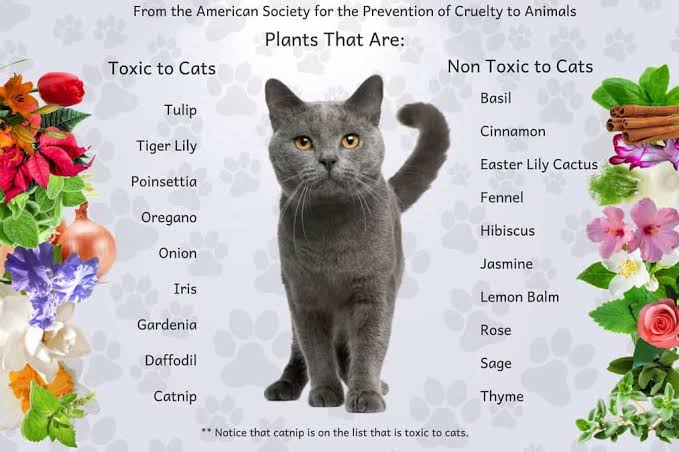
Snapdragons
Snap-Like Flower Characteristics
Snapdragons (Antirrhinum) are aptly named for their unique snap-like blooms that resemble the face of a dragon when gently squeezed. Available in an array of colors, these charming flowers bring a whimsical touch to gardens and floral arrangements alike. The distinctive shape of snapdragon flowers adds visual interest, making them a delightful addition to any cat-friendly space.
Non-toxicity To Cats
Cat owners can breathe a sigh of relief as snapdragons are generally considered non-toxic to feline companions. The absence of harmful substances in these blooms makes them a safe choice for homes with cats. Unlike some flowers that may pose health risks, snapdragons allow you to enjoy their beauty without compromising the well-being of your furry friend.
Best Practices For Introducing Snapdragons To Your Home
- Secure Placement: When incorporating snapdragons into your home, ensure they are placed in areas where your cat cannot easily reach them. Elevated surfaces or hanging baskets can be effective ways to showcase these flowers without risking unintended interactions.
- Outdoor Gardens: Plant snapdragons in your outdoor garden to create a cat-friendly environment. The blooms’ vibrant colors and unique shapes will not only enhance your garden’s appeal but also provide a safe and enjoyable space for your cat to explore.
- Bouquets and Arrangements: Include snapdragons in your floral arrangements, combining them with other cat-safe flowers. Their vertical stems and snap-like blossoms add height and texture, creating visually appealing bouquets for your home.
- Regular Monitoring: Keep an eye on your snapdragons to ensure they remain in good condition and free from pests. Regular monitoring allows you to address any issues promptly and maintain a healthy environment for both your flowers and your cat.
See Also: The Top 9 Best Cat Feeders in 2024
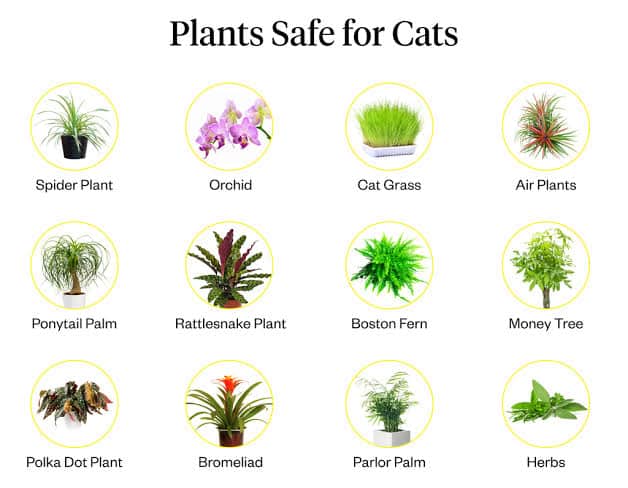
Petunias
petunias stand out as charming and vibrant blooms that not only enhance the visual appeal of your surroundings but also prioritize the safety of your feline friends.
Cat-Safe Qualities
Petunias boast several cat-safe qualities that make them a popular choice for pet owners. These blooms are non-toxic to cats, ensuring that your feline companions can coexist harmoniously with these graceful flowers. The absence of harmful substances in petunias makes them a safe and enjoyable addition to both indoor and outdoor spaces, allowing you to cultivate a cat-friendly environment without compromising on floral beauty.
Variety Of Colors And Types
One of the appealing aspects of petunias is their wide range of colors and types. From rich purples and pinks to vibrant reds and whites, petunias offer a spectrum of choices to suit your preferences and complement your home’s aesthetic. Whether you opt for trailing or upright varieties, petunias provide versatility in landscaping, hanging baskets, or container gardening, allowing you to create a diverse and visually stunning cat-safe floral display.
Low Maintenance And Resilience
Petunias are known for their resilience and low maintenance, making them an ideal choice for both experienced and novice gardeners. These hardy flowers thrive in various conditions, including full sun or partial shade, and require minimal care. Their adaptability and ability to withstand fluctuating conditions contribute to the appeal of petunias as cat-safe flowers that can flourish effortlessly in your living space.
Tips For Cultivating Petunias In A Cat-Friendly Environment
- Raised Planters: Consider planting petunias in raised planters or hanging baskets to keep them out of your cat’s reach. This not only protects the flowers from potential nibbling but also adds an elevated element to your garden or home decor.
- Regular Pruning: To maintain the health and longevity of your petunias, engage in regular pruning to remove spent blooms and encourage continuous flowering. This practice not only enhances the appearance of your petunias but also minimizes the risk of potential hazards for your cat.
- Fertilizer Awareness: Be mindful of the type of fertilizer used for your petunias, as some fertilizers may be harmful to cats. Opt for pet-safe fertilizers to ensure the well-being of your feline companions while promoting the optimal growth of your petunias.
See Also: Choosing The Right Wood Cat Litter: A Guide To Optimal Pet Care
Cat-Friendly Greenery
Creating a lush and vibrant indoor environment doesn’t mean compromising the safety of your feline friends. In this exploration of cat-safe greenery, we’ll shine a spotlight on three delightful options. They are; the Spider Plant, Boston Fern, and Areca Palm. These plants do not only add a touch of nature to your space but also ensure the well-being of your curious cats.
Spider Plant
Nature’s Air Purifier Spider plants (Chlorophytum comosum) are not only known for their arching leaves and striking appearance but also for their air-purifying qualities. These resilient green companions effectively filter indoor air pollutants, making them a beneficial addition to your home. Best of all, spider plants are cat-safe, allowing you to enjoy cleaner air without worrying about potential harm to your feline friends.
Boston Fern
Graceful Foliage, Cat-Friendly Appeal The Boston Fern (Nephrolepis exaltata) is celebrated for its graceful, feathery fronds that add a touch of elegance to any space. Beyond its aesthetic appeal, the Boston Fern is a cat-friendly choice.
These lush green ferns thrive in indirect light and high humidity, making them well-suited for bathrooms or other areas with moisture, while providing a safe and stylish green haven for your cats to explore.
Areca Palm
Tropical Elegance with Feline Safety Bring a touch of the tropics into your home with the Areca Palm (Dypsis lutescens). Known for its graceful fronds and air-purifying capabilities, the Areca Palm is a cat-safe greenery option.
This low-maintenance plant flourishes in bright, indirect light and can grow to be an impressive focal point in your living space. Its non-toxic nature ensures a worry-free environment for your cats to roam and enjoy their surroundings.
See Also: 10 Beautiful Black Cat Breeds you can Adopt
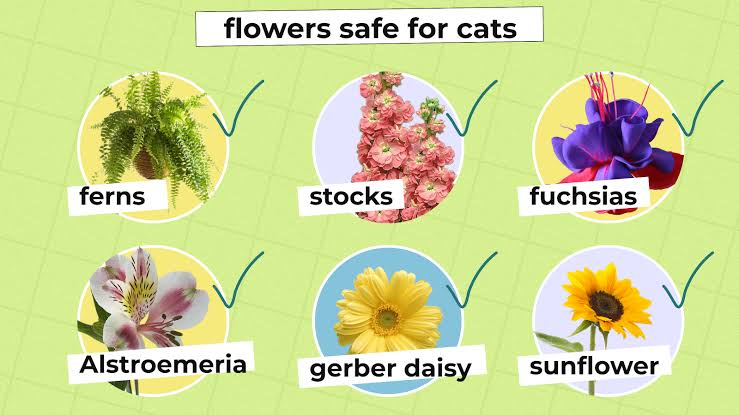
Tips For Cat-Safe Flower Arrangements
Here, we’ll explore essential tips for creating cat-safe flower arrangements that not only add a touch of elegance to your space but also prioritize the well-being of your furry friends.
Proper Placement To Prevent Cat Nibbling
- Elevated Spaces: Position flower arrangements on elevated surfaces, such as mantels, shelves, or tables, to prevent easy access for curious cats. This not only protects your blooms from potential nibbling but also ensures a cat-friendly environment.
- Hanging Arrangements: Consider hanging flower arrangements in well-ventilated areas using secure hooks. This creative approach not only adds a unique touch to your decor but also keeps flowers out of your cat’s reach, minimizing the risk of unintentional interactions.
- Use Cat Deterrents: Incorporate cat deterrents like citrus-scented sprays or double-sided tape around your flower arrangements. Cats often dislike these scents and textures, providing an additional layer of protection against unwanted nibbling.
Monitoring Cat Behavior Around New Flowers
- Observation Period: When introducing new flower arrangements, observe your cat’s behavior closely for the first few days. Cats may be curious about unfamiliar scents and textures, so monitoring their initial reactions can help you gauge their comfort level.
- Watch for Signs of Discomfort: Look for signs of discomfort or distress in your cat, such as excessive sniffing, sneezing, or changes in behavior. If you notice any adverse reactions, consider relocating the flower arrangement to a different spot or opting for alternative cat-safe blooms.
- Gradual Introduction: Introduce flowers gradually, allowing your cat to acclimate to the new scents and textures. This gradual approach can minimize the chances of overwhelming your cat and promote a more positive association with the flower arrangements.
Creating A Cat-Friendly Environment With Safe Flowers
- Research Cat-Safe Flowers: Prioritize using cat-safe flowers in your arrangements. Research cat-friendly blooms like roses, sunflowers, marigolds, and snapdragons to ensure that your floral displays pose no harm to your furry companions.
- Eliminate Toxic Varieties: Avoid using flowers known to be toxic to cats, such as lilies, tulips, and azaleas. By steering clear of these harmful varieties, you create a safer environment for your cat to explore without worry.
- Incorporate Pet-Friendly Greens: Enhance your flower arrangements with cat-friendly greenery like spider plants, Boston ferns, or cat grass. These additions not only complement your blooms but also provide a cat-friendly touch to your floral displays.
See Also: Cat Toys for Different Life Stages
Conclusion
Navigating the world of cat-safe flowers opens up a realm of possibilities for creating a harmonious and beautiful living space. By embracing a thoughtful selection of blooms like marigolds, roses, sunflowers, snapdragons, and petunias, you can infuse your home with the vibrancy of nature without compromising your feline companion’s safety. The key lies in understanding the diverse qualities of each flower.
The list of cat-safe flowers provides ample options to cater to both your love for flowers and your cat’s well-being. These blooms not only add aesthetic appeal but also contribute to the creation of a cat-friendly haven. There, your pets can explore and enjoy the beauty of nature without risk.
